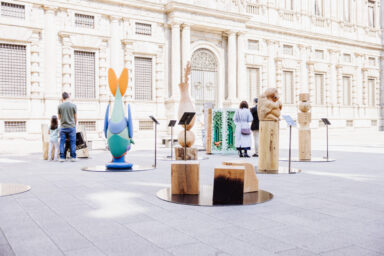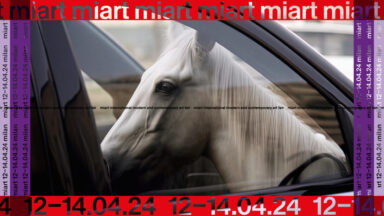The 2024 edition of BRAFA, one of Europe’s most prestigious art fairs, organized from January 28th to February 4th, will be bringing together 132 Belgian and international exhibitors from 14 countries at Brussels Expo (Halls 3 & 4) in Surrealist mode
Words Emanuela Zini
2024 will mark the hundredth anniversary of the birth of Surrealism, since it was in 1924 that André Breton published the Manifesto of Surrealism, initiating an artistic and philosophical movement that would have a lasting impact on the twentieth century. It was also the same year that poet Paul Nougé founded a Surrealist centre in Brussels, with the poets Camille Goemans and Marcel Lecomte, amongst others. This double anniversary is an ideal opportunity for BRAFA to invite its exhibitors to add a Surrealist touch to the fine creative diversity that characterizes the Fair.

The neologism “surrealism” first appeared in 1917, used by Guillaume Appolinaire as a subtitle for his play Les Mamelles de Tirésias, which he considered “surrealist” rather than “supernaturalist.” The same year, the concept was used in the presentation brochure for Jean Cocteau’s ballet Parade (directed by Serge Diaghilev, music by Erik Satie, set design by Pablo Picasso and choreography by Léonide Massine).
Surrealism, a poetic and artistic movement encompassing all the processes of expression and creation, came to be characterized by an emphasis on psychic forces freed from the control of reason and battling against received values. Or, as André Breton wrote in his manifesto, “the dictation of thought in the absence of all control exercised by reason and outside all moral or aesthetic concerns (…).”
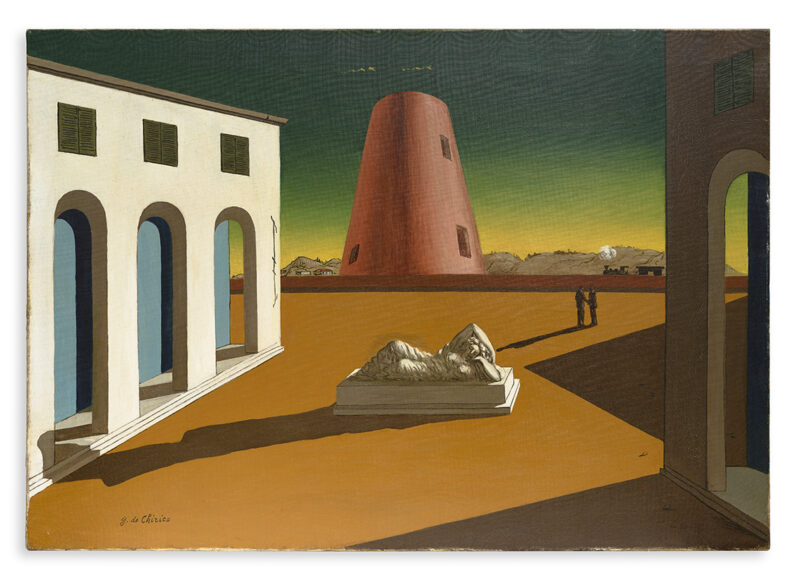
The French Surrealist movement, characterised by its trans-disciplinary nature and the extensive collaboration between its members, was based on the conviction that there was a higher reality linked to the omnipotence of dreams or the disinterested play of thought. At first essentially literary, it delighted in unexpected connections in order to bring out new meanings, in a liberation of the unconscious encouraged by the practice of automatic writing. Louis Aragon, Robert Desnos, Paul Eluard, René Magritte, Giorgio De Chirico, Philippe Soupault, Salvador Dalí and Jacques Prévert were just some of the writers, poets, painters and artists who accompanied this aesthetic and social revolution.
On the other hand, Belgian Surrealism, led by E. L. T. Mesens, Paul Colinet, Louis Scutenaire, André Souris and Marcel Mariën, quickly distanced itself from automatic writing and the political commitment of the Parisian group.
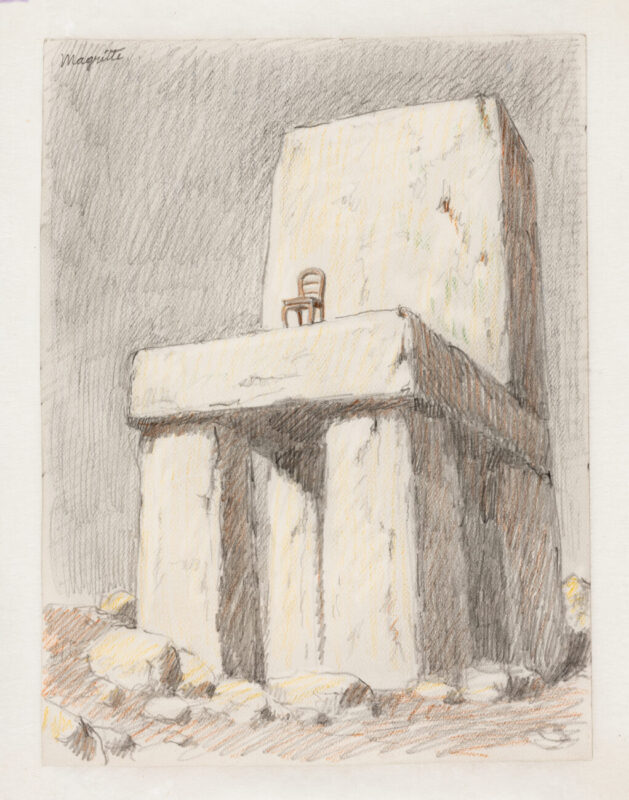
This incredible and fascinating complexity is embodied in a host of works highlighted by the various BRAFA exhibitors. Starting with the exceptional and extremely rare copy of André Breton’s Manifeste du Surréalisme (1924), one of nineteen original copies, presented by the Librairie Lardanchet (Paris) on the stand of Chambre professionnelle belge de la Librairie Ancienne et Moderne (CLAM). Another very early work, dating from 1916, is Léopold Survage’s Composition surréaliste, exhibited by Harold t’Kint de Roodenbeke (Brussels).
Also of note is a very fine drawing entitled La Légende des Siècles (1950), by Belgium’s greatest Surrealist, René Magritte, presented by De Jonckheere (Geneva), and a major ink on paper by the same artist, entitled L’intelligence (1946), proposed by Van Herck-Eykelberg (Antwerp). An Etude d’enfant by the whimsical Salvador Dalí for the second version of the Madone de Port-Lligat (1950) will be presented by Galerie Ary Jan (Paris), whilst Galerie de la Béraudière (Brussels) will be showing Héraclite (1943), an ink by André Masson. The Brussels gallery will also be showing several historic works by Max Ernst, including Horizon (1926) and Les Oiseaux (1925). Two important works by Giorgio De Chirico, characteristic of his metaphysical style, will be on display on the stand of Repetto Gallery (Lugano): Piazza d’Italia (1948-1972) and Piazza d’Italia con Arianna (early 1950s). Finally, the Galerie des Modernes (Paris) will be displaying an interesting Séville (1927) by Francis Picabia.
Heirs to the historic Surrealism, young generations of talented artists are still drawing inspiration from it today, as the stand of Rodolphe Janssen (Brussels) will show, with works by the American Emily Mae Smith and the Belgians Tom Poelmans and Thomas Lerooy. These are just some of the many works evoking the Surrealist movement at the Fair, which reflect the exceptional diversity and quality of the range on offer.

Paul Delvaux Foundation, guest of honour
Surrealist for some, a late heir to Symbolism for others, the painter Paul Delvaux (1897-1994), who died thirty years ago, will also be at the heart of this year’s Fair, with the Paul Delvaux Foundation as guest of honour. Established in 1979, the Foundation looks after the artist’s interests, in accordance with the wishes expressed by the painter himself, who bequeathed his collections, archives and the management of his copyright to it. Under its aegis, in 1982, the Paul Delvaux Museum in Saint-Idesbald and the non-profit organisation Les Amis du Musée Paul Delvaux were created, as well as an Authentication Committee, made up of specialists of his work, which meets twice a year to issue opinions or certificates of authenticity, and the Editions Fondation Paul Delvaux, which publishes reference works about the artist, his life and his work. At BRAFA, a dedicated exhibition space will bring together a group of works from the Paul Delvaux Museum in Saint-Idesbald, which holds the world’s largest collection of the artist’s work, enabling us to retrace his entire career. From the 1920s to the end of the 1960s, these works, which are not for sale, will illustrate his importance in twentieth-century art.
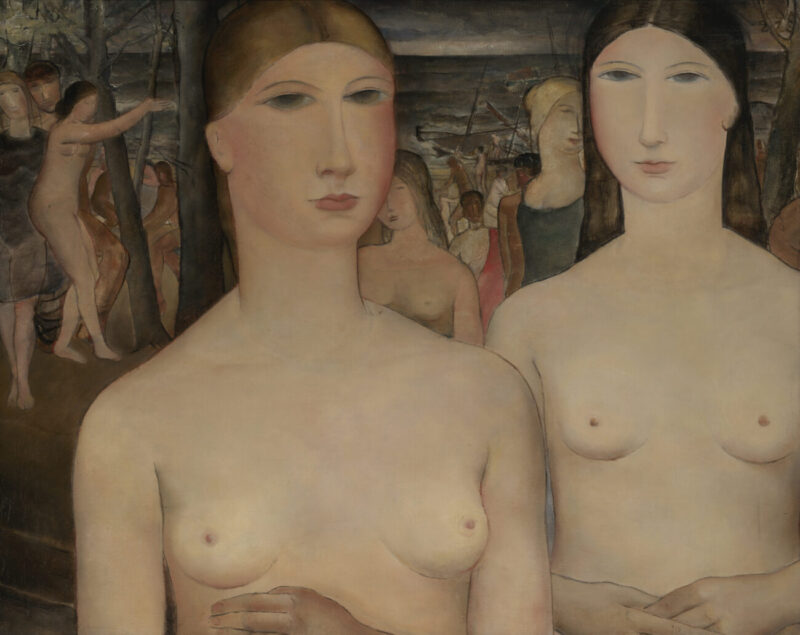
Paul Delvaux’s particular place in Surrealism
Greatly inspired by the work of Giorgio De Chirico, and close to René Magritte from the late 1910s until the latter’s death, Paul Delvaux was not a Surrealist artist as understood by the members of the Brussels group, nor indeed by the French Surrealists. As an introvert with little interest in politics, he was not a provocateur, and therefore avoided Surrealist involvement. He was, however, close to the Surrealists in his “theatricalisation” of a closed, dreamlike universe, leaving plenty of room for imaginary narratives, but with a relatively restrained form of eroticism in contrast to the provocative dimension of the Surrealists. Delvaux’s timeless imagery, often set in fixed locations – cities, railway stations, urban theatres – is imbued with classical culture, Greek and Latin mythologies that hark back to the work of De Chirico and the Symbolism of the late nineteenth century.
Works by Delvaux, paintings, watercolours and prints available for sale, will naturally be offered by a number of exhibitors at BRAFA, from a Nu dans l’atelier (1920s) at Galerie Jean-François Cazeau (Paris), to the formidable La Fin du Voyage (1968) presented by Opera Gallery (Geneva), by way of Femmes devant la mer (1928) and L’été (1963) displayed by Francis Maere Fine Arts (Ghent), La danse macabre (1934) on the stand of Harold t’Kint de Roodenbeke (Brussels), Deux Femmes (1950) on the stand of Galerie Oscar De Vos (Sint-Martens-Latem), L’Annonciation (1952) at Van Herck-Eyckelberg (Antwerp), La Tente rouge (1966) presented by Galerie Taménaga (Paris) and Alésia ou les captives (1973), shown by Guy Pieters Gallery (Knokke), among other rarities.
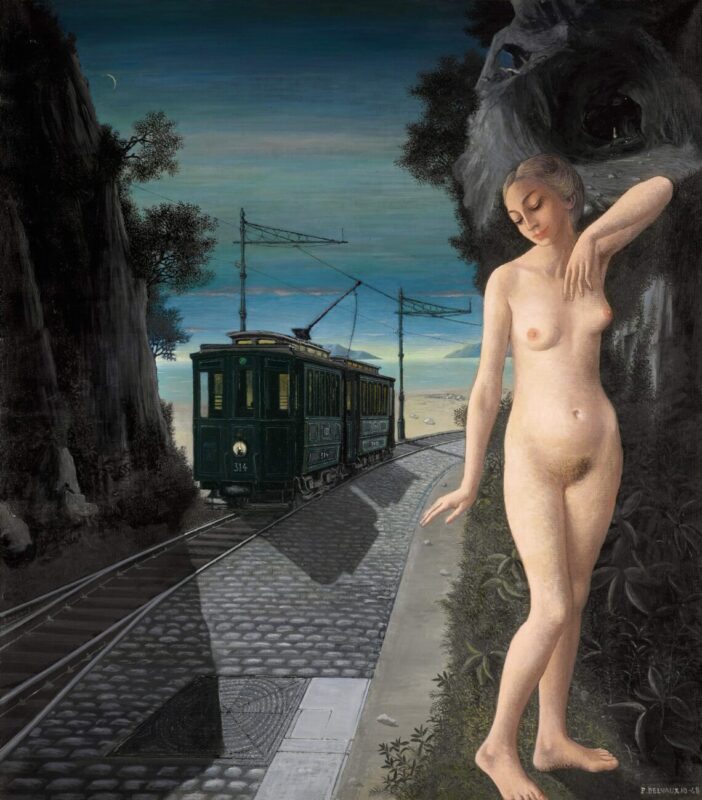
General Information:
Practical information: https://www.brafa.art/en/home
The highlights: https://www.brafa.art/en/selected-works
